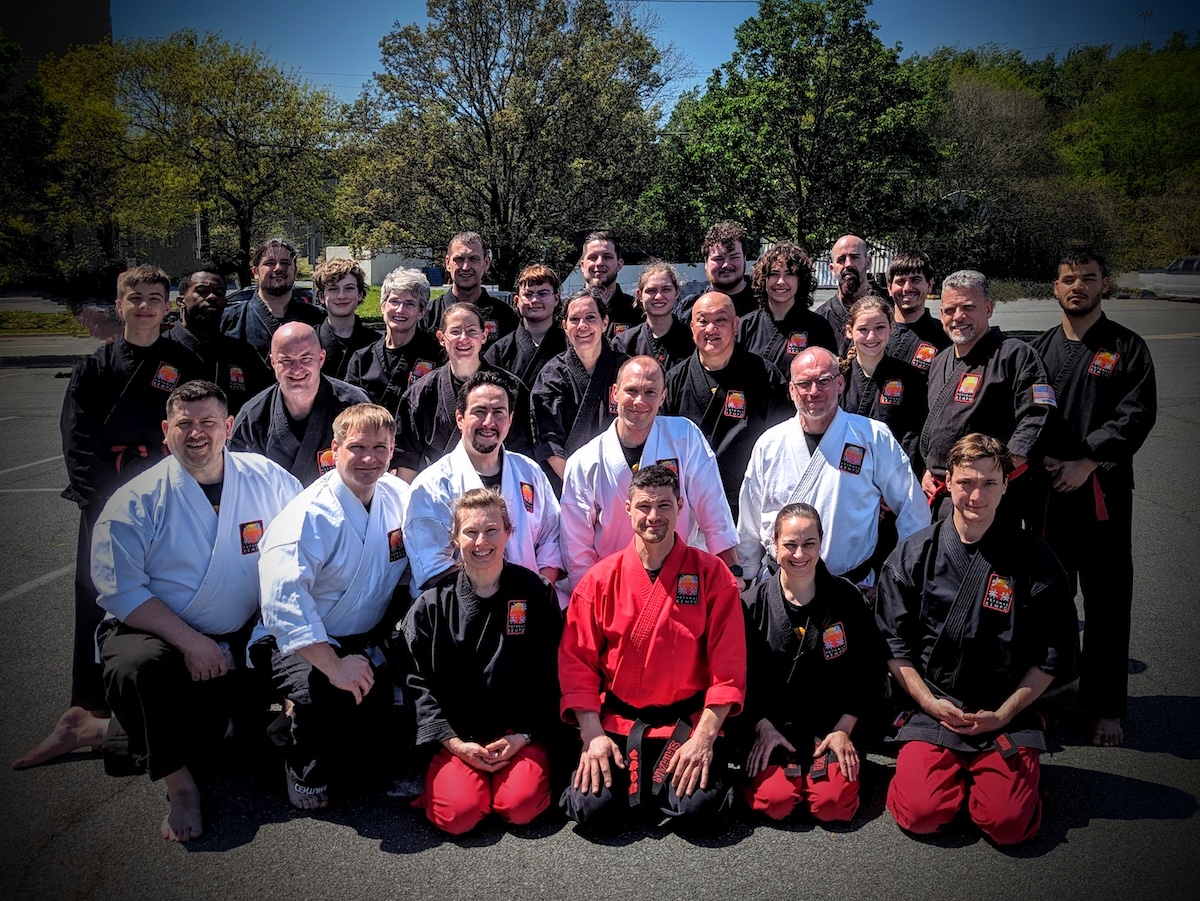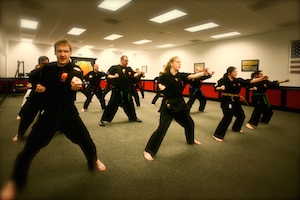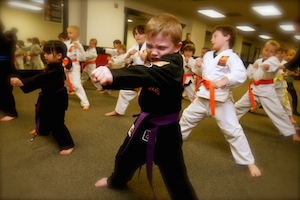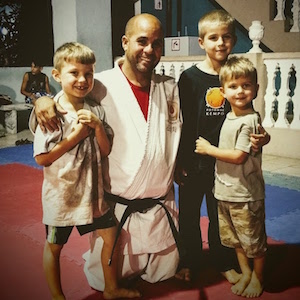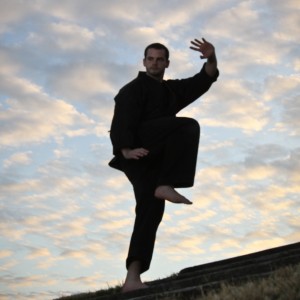 Growing up in Northern Virginia, Dyer was an overweight and out-of-shape kid. He dreamed about practicing martial arts, like his oldest brother, but he never had the opportunity to take classes. The closest he got was donning his brother’s yellow belt and running around the house, a make-believe kung fu master.
Growing up in Northern Virginia, Dyer was an overweight and out-of-shape kid. He dreamed about practicing martial arts, like his oldest brother, but he never had the opportunity to take classes. The closest he got was donning his brother’s yellow belt and running around the house, a make-believe kung fu master.
A couple decades later, Dyer returned to Northern Virginia from a year studying art renaissance history in Italy. Having succumbed to the Italian cuisine, and not having had a regular workout schedule, Dyer was 40 pounds overweight and again, out of shape.
Now armed with an English degree and not-so-dreamy day job (while seeking work at a museum), Dyer decided to make good on his childhood wish and explore the world of Kempo.
“I remember almost throwing up in my first lesson,” Dyer says. “I was so inflexible I couldn’t reach the kick bag, which was a foot off the floor. I realized I really needed to get in shape.”
Once Dyer made the decision, he was committed to the practice and worked hard to improve. Within a couple months, he says he was so in love with Kempo that he changed his goal; now, he wanted to train to become an instructor. He joined the Academy, a volunteer program for students who want to teach, and before long, he was begging Master Santillo for a full-time job as an instructor.
“They were taking on instructors, and from what I remember, there were not a lot of positions open,” Dyer says. “But I’d made it clear that I was looking to do it.” In 2008, just eight months after he first arrived at the dojo, he left his day job and found himself working for Master Santillo, putting in long weeks teaching Kempo.
These days, Dyer is among the hardest-training students in the dojo. He teaches instructors and some of the most advanced students. Each week includes teaching five group classes and as many as 30 private lessons. He also helps in what he calls “behind-the-scenes,” with ideas to improve the program, training methods and drills.
So who teaches one of the top teachers? That job falls to Master Santillo. “One of the most important things Master Santillo has taught instructors is that there is always something to work on,” Dyer says. “He’s a good example of that. It’s something I take seriously. I’m in the dojo 60 hours a week and put in a couple hours of training on my days off. The thing about martial arts is that once you understand it, you can apply it. It’s a never-ending process.”
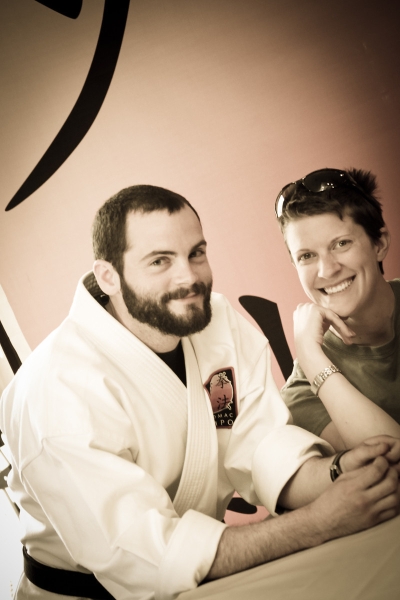 Currently, for example, he is working on timing his weight shift into every move and maintaining longer and deeper stances. He also learns by comparing notes with his middle brother, who – coincidently – also did not practice martial arts as a child but today teaches the discipline in Georgia.
Currently, for example, he is working on timing his weight shift into every move and maintaining longer and deeper stances. He also learns by comparing notes with his middle brother, who – coincidently – also did not practice martial arts as a child but today teaches the discipline in Georgia.
Dyer earned his Third Degree Black Belt last summer, in a private test administered on the mountains overlooking the Shaolin Temple in northern China. He will return this summer, as the guest of the family of two of his students, who will be testing for Junior Brown and Junior Black Belts.
Looking back, Dyer can see clearly what a different life he leads today. The obvious are his flexibility (“I don’t worry about busting my toe on the base of the kick bag anymore; I can kick over my head”), and he has lost a significant amount of weight and reached a healthy body fat percentage. The last time his heart rate was checked, the nurse had the doctor double-check it — because it was so low.
But the less obvious changes have to do with Dyer’s lifestyle. He and his wife eat all organic, all local food, and the discipline he has learned in Kempo has helped him manage his non-healthy urges. “You still have cravings for things, but with the discipline you can say, ‘I should probably stop eating this now,’ or ‘This is probably better for me than a cream-filled pastry.’” He says after a while of eating healthy, his body began craving different things. “The other day, I was sitting around the house, and I said, ‘I really want a carrot.’”
Dyer says Kempo has even helped in the way he communicates and how he carries himself around others. “I have worked very hard, and I think that’s inspiring to people,” he says. One of the most rewarding parts of reaching such a high level in his practice is that he knows people see how far he has come, and they can gain from it. “I think my experience getting in shape gets other people excited,” he says. “Being able to spread the enthusiasm for health and fitness is incredibly important and powerful.”
